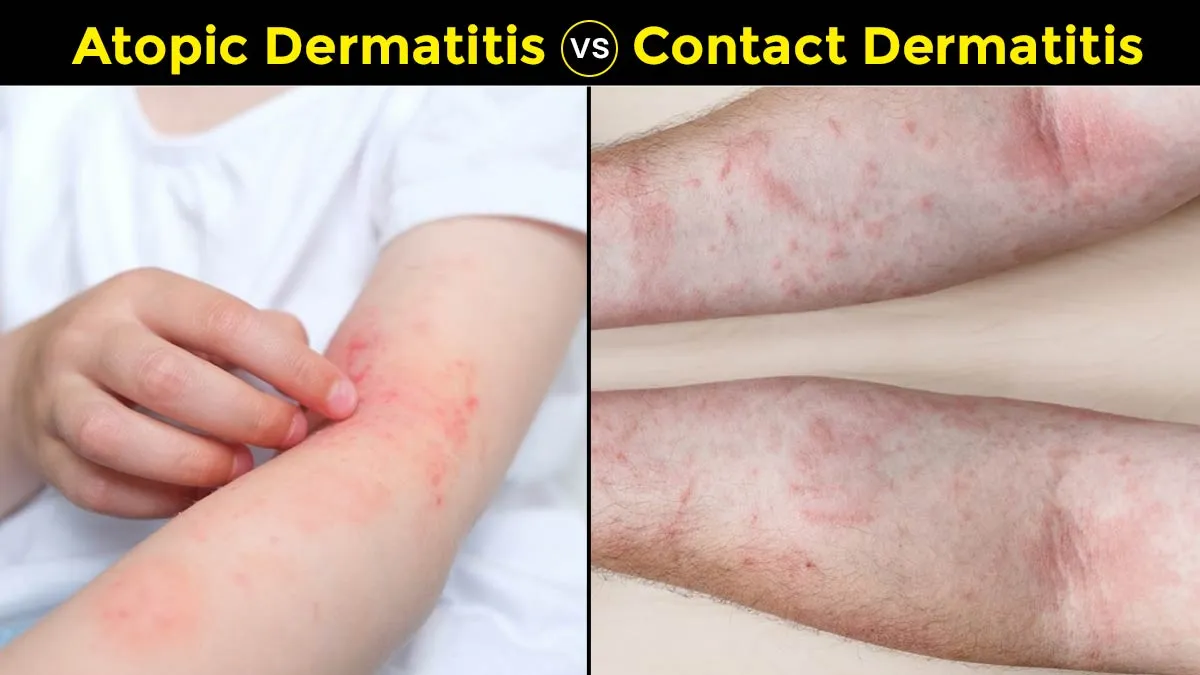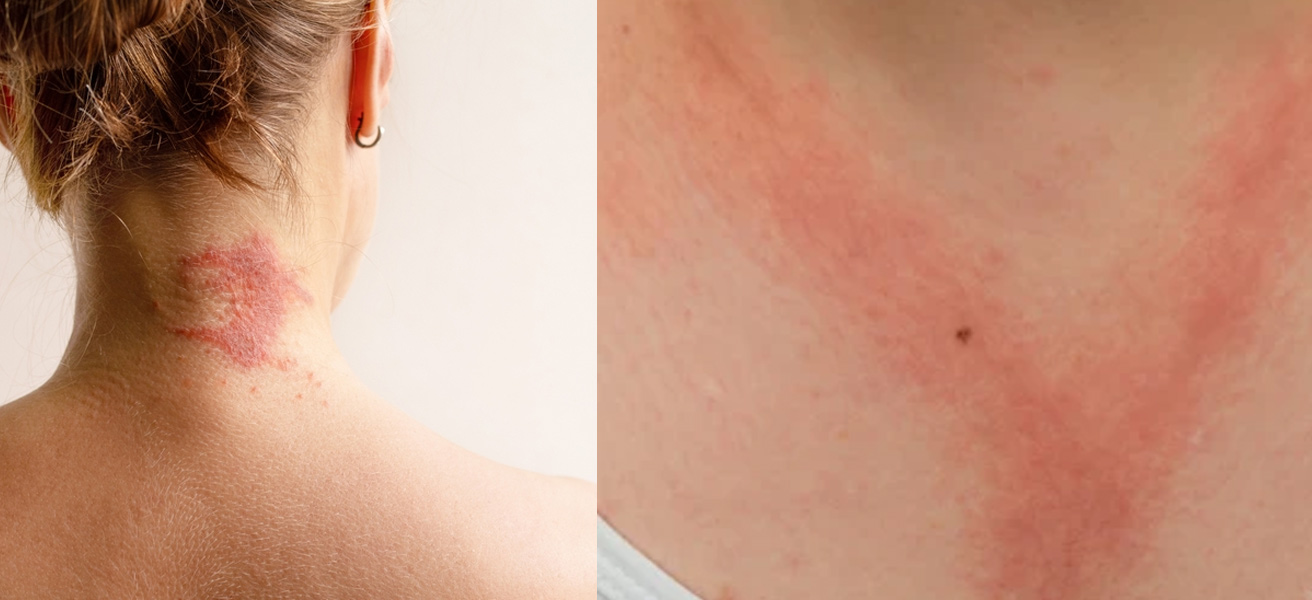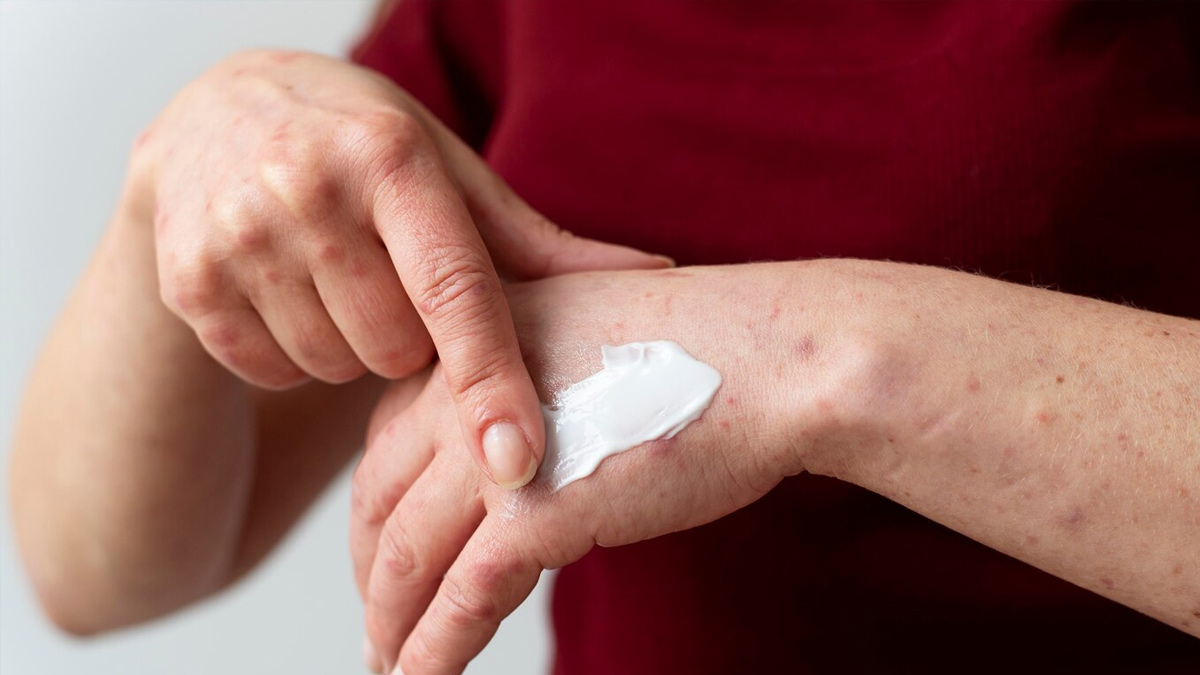
Many people struggle with skin conditions that cause irritation, redness, and discomfort. Among the most common are Atopic Dermatitis (AD) and Contact Dermatitis (CD), which are often mistaken for one another. Although both lead to skin inflammation, their causes and management are different.
Table of Content:-
Dr Rakesh Jangra, Dermatologist and Hair Transplant Surgeon, Medical Director, Rakshaa Aesthetics, Pitampura, Delhi, said, "Patients frequently ask me about these conditions, often confused about their differences. Identifying the differences between them is crucial for successful treatment."
What Is Atopic Dermatitis?

Atopic dermatitis (AD) is a chronic inflammatory skin disorder with a strong genetic basis. It is often associated with allergic conditions, such as asthma and hay fever. This condition usually starts during childhood, causing dryness, itchiness, and skin inflammation. "The underlying cause of AD has been attributed to a genetic defect in the skin's barrier, which renders it more vulnerable to irritation and water loss. Due to its genetic character, AD tends to follow families and commonly goes hand-in-hand with other allergic diseases," added Dr Jangra.
What Is Contact Dermatitis?

"Unlike AD, CD is a skin reaction triggered by exposure to allergens or irritants, such as chemicals, fragrances, or metals. It is not inherited and does not last a lifetime like AD," said Dr Jangra. According to StatPearls, CD is most common in those with red hair and fair skin. Women are also more likely to develop contact dermatitis, usually because they wear wearing jewellery and apply perfumes.
CD can be divided into two subtypes: Allergic Contact Dermatitis (ACD) and Irritant Contact Dermatitis (ICD). ACD occurs when the immune system responds to an allergen, whereas ICD results from direct skin damage caused by an irritant.
A 2018 review suggests that individuals with AD may have irregular immune system functions and compromised skin barriers, increasing their risk of developing ACD. As a result, people with AD are more likely to experience allergic reactions when exposed to possible allergens.
How to Differentiate Between Atopic Dermatitis and Contact Dermatitis?

One of the primary differences between these two skin conditions is the site where the affected skin is located. "AD usually occurs on flexural surfaces, like elbows, knees, and neck, while CD happens on directly exposed surfaces, like hands and face, which have been exposed to an irritant. Furthermore, AD is characterised by raised immunoglobulin E (IgE) levels, whereas CD is marked by T-cell activation or inflammatory cytokines," explained Dr Jangra.
A 2014 study indicates that the majority of individuals who develop AD are five years old or younger, whereas CD is relatively rare in young children.
Treatment Approach

A proper diagnosis is necessary for both conditions to be managed effectively. Avoiding triggers is key. "AD management involves moisturising, anti-inflammatory drugs, short-course corticosteroids and treatments, such as biologics or phototherapy. CD, on the contrary, tends to resolve as soon as the offending irritant is eliminated. In more severe instances, topical or oral immunosuppressants may be required," added Dr Jangra.
Also Read: How Can You Get Rid Of Contact Dermatitis FAST? Expert Answers And Shares 5 Preventive Measures
When to See a Doctor?
Dr Jangra concluded, "If symptoms persist, worsen, or affect daily life, seeking professional advice is essential. Timely consultations are crucial to prevent complications and ensure optimal skin health. Understanding these conditions allows for better management and improved quality of life. For expert guidance and personalised treatment, visit your dermatologist and take the first step towards healthier skin."
[Disclaimer: This article contains information provided by an expert and is for informational purposes only. Hence, we advise you to consult your professional if you are dealing with any health issue to avoid complications.]
Also watch this video
How we keep this article up to date:
We work with experts and keep a close eye on the latest in health and wellness. Whenever there is a new research or helpful information, we update our articles with accurate and useful advice.
Current Version